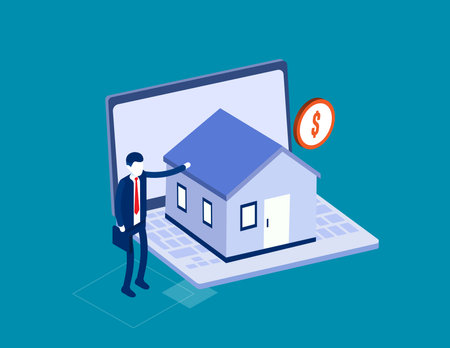1. Understanding Local Market Conditions
One of the first and most important pricing strategies real estate agents use to sell homes quickly is understanding local market conditions. Before setting a price, agents take a close look at whats happening in the neighborhood and surrounding areas. This includes analyzing recent sales, current listings, and how long homes are staying on the market.
Why Market Conditions Matter
The real estate market can shift quickly. Pricing a home too high in a buyer’s market—when there are more homes for sale than buyers—can lead to longer time on the market. On the other hand, pricing too low in a seller’s market—when demand exceeds supply—might leave money on the table. Knowing whether it’s a buyers or sellers market helps agents set the right price from the start.
Key Factors Agents Analyze
| Factor | Description |
|---|---|
| Recent Sales (Comparables) | Homes sold recently in the same neighborhood with similar features give a solid baseline for pricing. |
| Current Inventory | The number of active listings shows how much competition exists in the area. |
| Days on Market (DOM) | How long similar homes have been listed before selling offers insight into buyer interest. |
| Price per Square Foot | This helps compare homes of different sizes by showing average value based on space. |
| Buyer Demand | High demand can justify slightly higher prices; low demand may require more competitive pricing. |
Using Data to Set Competitive Prices
By examining this data, real estate agents can recommend a listing price that attracts serious buyers without underpricing the property. The goal is to position the home as a great value within its specific neighborhood and condition, making it stand out while still aligning with what buyers expect for similar properties nearby.
Example Scenario:
If three similar homes in your neighborhood recently sold for around $450,000 and are around 2,000 square feet each, your agent might suggest pricing your 2,100 square foot home at $460,000—especially if theres low inventory and high demand. But if several similar homes are sitting unsold at $470,000+, your agent might recommend listing closer to $450,000 to stay competitive.
Bottom Line:
A deep understanding of local trends allows agents to strategically position your home in the market from day one. This smart approach increases visibility and attracts motivated buyers quickly.
2. Using Strategic Pricing Bands
One of the smartest pricing tactics real estate agents use is setting listing prices within strategic pricing bands. This means choosing price points that fall right at or just below commonly searched thresholds on platforms like Zillow, Redfin, and the MLS. Why does this matter? Because most homebuyers search for homes using price filters in round numbers — for example, from $300K to $400K, or $400K to $500K.
If you price a home at $401,000, it won’t show up in searches filtered with a max budget of $400K. But if you price it at $399,000, it captures both attention and clicks from buyers looking under $400K — giving your listing more visibility and potentially more offers.
Why Pricing Bands Matter
- Increased exposure: Homes priced just below key thresholds appear in more search results.
- Psychological appeal: A price of $399K feels significantly cheaper than $401K, even though the difference is minimal.
- More buyer interest: More views often lead to more showings and quicker offers.
Common Pricing Bands Used by Agents
| Price Band | Better Listing Price | Why It Works |
|---|---|---|
| $200K – $300K | $299,000 instead of $301,000 | Keeps the home visible to buyers searching up to $300K |
| $300K – $400K | $399,000 instead of $401,000 | Appears in both sub-$400K and broader $400K range searches |
| $400K – $500K | $499,000 instead of $501,000 | Maximizes exposure among buyers with a cap at $500K |
Pro Tip:
If your property is very close to a major pricing band (like being valued around $405K), consider doing small improvements to justify dropping the list price to the lower band (i.e., $399K). The increased exposure can often make up for that slight reduction in asking price.

3. Pricing Below Market to Spark Bidding Wars
One of the most effective strategies real estate agents use to sell homes quickly is intentionally pricing a property slightly below its market value. While this may seem counterintuitive at first, the goal isnt to settle for less—its to generate more interest, create urgency, and potentially drive up the final sale price through multiple competing offers.
Why This Strategy Works
In a competitive housing market, buyers are constantly on the lookout for good deals. When a home is priced just below what its worth, it attracts more attention from potential buyers. Increased interest often leads to more showings and ultimately more offers. With several buyers vying for the same property, a bidding war can begin—sometimes pushing the final sale price above market value.
Psychological Triggers
- Perceived Value: Buyers feel like they’re getting a great deal.
- Fear of Missing Out (FOMO): A lower price increases urgency to act fast.
- Social Proof: Seeing other interested buyers validates their decision to make an offer.
Ideal Situations for This Strategy
This approach works best in seller’s markets or areas with high buyer demand. It can also be useful when trying to sell a home quickly due to relocation, financial needs, or timing concerns.
Pros and Cons
| Pros | Cons |
|---|---|
| Generates high buyer interest quickly | Risk of selling below market if no bidding war happens |
| Can lead to multiple offers and higher final price | Might attract bargain hunters not serious about buying |
| Sparks urgency among potential buyers | Some sellers may feel uncomfortable starting low |
Tips for Success
- Work with a knowledgeable agent: They can help determine how much below market you should price your home.
- Create strong marketing materials: High-quality photos and staging can boost interest even further.
- Set a deadline for offers: This encourages buyers to act quickly and helps manage expectations.
This pricing strategy isn’t about undervaluing your home—it’s about creating momentum that leads to better outcomes. When executed well, it’s a powerful way to sell faster and potentially at a higher price than expected.
4. Adjusting Price Based on Feedback and Time on Market
One of the most effective pricing strategies real estate agents use to sell homes quickly is staying flexible and responsive to how the market reacts. If a home sits on the market too long without serious offers, it’s often a sign that buyers see it as overpriced. That’s why monitoring buyer feedback and traffic is essential.
Why Feedback Matters
Open houses, showings, and online listings all provide opportunities to gather valuable feedback. Are potential buyers saying the home feels too expensive compared to others in the neighborhood? Are they loving the property but still not making offers? This kind of insight helps agents determine if price is a barrier.
Tracking Time on Market
The longer a home stays listed without an offer, the more likely buyers are to assume somethings wrong with it. A timely price adjustment can help maintain interest before the listing becomes stale.
When to Consider a Price Adjustment
| Time on Market | Buyer Activity | Suggested Action |
|---|---|---|
| 1-2 weeks | High traffic, no offers | Monitor feedback closely, consider minor updates or staging improvements |
| 3-4 weeks | Moderate traffic, no offers | Consider a small price reduction (1-3%) to reignite interest |
| 5+ weeks | Low traffic, no offers | Larger price adjustment (5% or more) may be needed to stay competitive |
Tip:
A strategic price drop can actually increase visibility by pushing your listing back up on MLS search results and alerting interested buyers who were previously priced out.
By listening to what buyers are saying and watching how your listing performs over time, you’ll know when it’s time to adjust. This proactive approach keeps your property attractive in a dynamic market and helps secure faster sales.
5. Incorporating Psychological Pricing Techniques
One of the most effective strategies real estate agents use to attract buyers and sell homes faster is psychological pricing. This approach taps into how buyers perceive value based on numbers, often without them even realizing it.
Why It Works
Psychological pricing plays on the idea that certain price points feel significantly lower than others—even if the difference is minimal. For example, a home listed at $499,900 feels like a better deal than one priced at $500,000, even though the difference is just $100. This small shift can influence buyer behavior and generate more interest.
Common Psychological Pricing Examples
| Standard Price | Psychological Price | Perceived Benefit |
|---|---|---|
| $300,000 | $299,900 | Feels more affordable; under $300K |
| $400,000 | $399,999 | Stays within buyers search filters |
| $750,000 | $749,000 | Creates sense of savings |
Appealing to Online Search Filters
Many homebuyers set search filters in $25,000 or $50,000 increments when browsing online listings. By pricing a property just below a round number (e.g., $499,900 instead of $500,000), the home appears in searches for people looking up to $500K—maximizing visibility and potential showings.
Tip for Agents:
Always research common price brackets in your local market and list just below those key thresholds to take advantage of both psychological appeal and search optimization.
6. Leveraging Pre-Appraisals and Home Valuation Tools
One powerful pricing strategy that many real estate agents use to sell homes quickly is leveraging pre-appraisals and online home valuation tools. These methods help validate your listing price and give potential buyers more confidence that the home is fairly priced.
Why Use Pre-Appraisals?
A pre-appraisal is when a licensed appraiser evaluates your homes value before it even hits the market. This professional assessment provides an unbiased opinion of the propertys worth based on recent sales, local market trends, and property condition. Real estate agents often use this to:
- Set a realistic asking price
- Avoid overpricing or underpricing
- Build trust with potential buyers
- Provide documentation during negotiations
Benefits of Pre-Appraisals for Sellers
| Benefit | Description |
|---|---|
| Price Accuracy | Helps avoid guesswork by offering a data-backed price point. |
| Buyer Confidence | Makes buyers feel more secure about making an offer. |
| Smoother Negotiations | You can back up your asking price with a professional opinion. |
| Faster Sales Process | If buyers trust the price, they may act quicker. |
The Role of Online Valuation Tools
Apart from professional appraisals, agents also use online valuation tools like Zillow’s Zestimate, Redfin Estimate, or Realtor.com’s My Home. While these aren’t always 100% accurate, they provide a general idea of what similar homes are selling for in the area. Agents use these tools to:
- Cross-check listing prices with market trends
- Create pricing reports to show sellers and buyers
- Anonymously evaluate neighborhood competition
Popular Home Valuation Platforms
| Tool | Main Feature |
|---|---|
| Zillow Zestimate | User-friendly interface with automated value estimates. |
| Redfin Estimate | Tends to be more accurate in major metro areas. |
| Realtor.com My Home | Adds owner insights for a personalized estimate. |
The Agent Advantage: Combining Tools with Expertise
The real magic happens when real estate agents combine these tools with their local market knowledge. A good agent doesn’t just rely on numbers—they interpret them in context. For example, if a home has unique features not reflected in automated tools, a pre-appraisal can highlight those benefits. At the same time, online valuations can help support your pricing strategy when communicating with skeptical buyers.
This layered approach ensures that the listing price is competitive yet realistic—key factors in attracting serious offers quickly.

